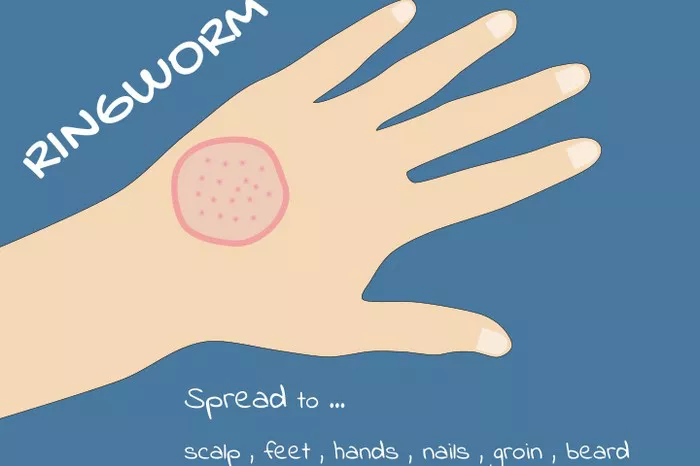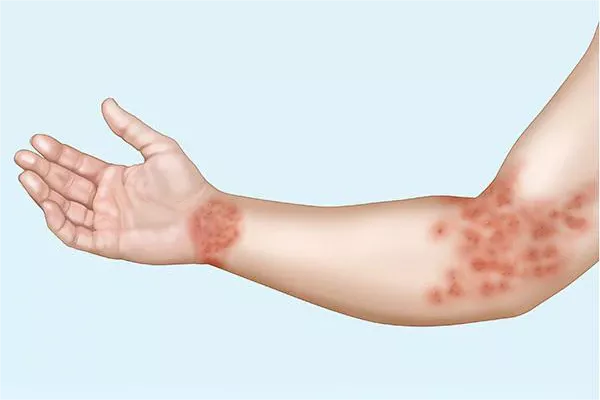Ringworm, despite its name, is not caused by a worm but by a fungus. It is a prevalent condition worldwide, affecting people of all ages and demographics. Understanding the commonality of ringworm in humans involves exploring its causes, symptoms, risk factors, and treatment options.
What Is Ringworm?
Ringworm, medically known as tinea, is a fungal infection that affects the skin, hair, and nails. The fungus thrives in warm, moist environments and can be found on the body (tinea corporis), scalp (tinea capitis), feet (tinea pedis or athlete’s foot), groin area (tinea cruris or jock itch), and nails (tinea unguium).
Causes of Ringworm
Ringworm is caused by a group of fungi called dermatophytes. These fungi feed on keratin, a protein found in the skin, hair, and nails. The infection can be spread through direct contact with an infected person or animal, or by touching contaminated objects and surfaces.
Symptoms of Ringworm
The symptoms of ringworm vary depending on the location of the infection but commonly include:
- Itchy, red, circular rash with raised edges: This is the most typical symptom, often giving the infection its ring-like appearance.
- Cracked, scaly skin: Affected areas may become dry and flaky.
- Hair loss: In cases of scalp ringworm, patches of hair may fall out.
- Thickened, discolored nails: When the nails are affected, they can become brittle and change color.
Prevalence of Ringworm
Ringworm is a widespread infection, with millions of cases occurring globally each year. The prevalence varies by region, age group, and environmental conditions.
Global Prevalence
Studies have shown that ringworm is particularly common in tropical and subtropical regions due to the warm, humid climate that fosters fungal growth. However, it is also prevalent in temperate regions, especially in areas with high population density and poor hygiene conditions.
Age and Gender
Ringworm can affect individuals of any age, but certain forms are more common in specific age groups. For example, tinea capitis is more frequently seen in children, while tinea pedis and tinea cruris are more common in adults. There is no significant gender predisposition for most types of ringworm, though tinea cruris is more often observed in males.
Socioeconomic Factors
Socioeconomic factors also play a role in the prevalence of ringworm. Overcrowded living conditions, limited access to healthcare, and poor hygiene practices contribute to higher infection rates. Developing countries tend to have higher incidences due to these factors.
Risk Factors for Ringworm
Several factors increase the risk of contracting ringworm:
- Close Contact: Living with or having close contact with someone who is infected increases the risk.
- Animal Exposure: Pets, especially cats and dogs, can carry the fungus and transmit it to humans.
- Sports Participation: Athletes who engage in contact sports, such as wrestling, are at higher risk.
- Shared Facilities: Using public showers, swimming pools, and locker rooms can expose individuals to the fungus.
- Weakened Immune System: People with weakened immune systems are more susceptible to infections, including ringworm.
Diagnosis of Ringworm
Diagnosing ringworm typically involves a physical examination of the affected area by a healthcare provider. In some cases, a sample of skin, hair, or nails may be taken for laboratory analysis to confirm the presence of the fungus.
Treatment of Ringworm
Treatment for ringworm usually involves antifungal medications, which can be administered topically or orally, depending on the severity and location of the infection.
Topical Antifungal Medications
For mild to moderate cases, over-the-counter or prescription-strength topical antifungal creams, ointments, or lotions are often effective. Common ingredients include clotrimazole, miconazole, and terbinafine.
Oral Antifungal Medications
More severe infections, or those that affect the scalp and nails, may require oral antifungal medications such as terbinafine, itraconazole, or fluconazole. These medications are usually taken for several weeks to ensure complete eradication of the fungus.
SEE ALSO: Does Isopropyl Alcohol Kill Ringworm?
Prevention of Ringworm
Preventing ringworm involves adopting good hygiene practices and taking precautions to minimize exposure to the fungus.
- Maintain Personal Hygiene: Regularly wash hands, body, and hair, especially after contact with animals or contaminated surfaces.
- Keep Skin Dry: Fungi thrive in moist environments, so keeping the skin dry and well-ventilated is crucial.
- Avoid Sharing Personal Items: Do not share towels, clothing, hairbrushes, or other personal items with others.
- Disinfect Common Areas: Regularly clean and disinfect areas prone to fungal contamination, such as gym equipment, locker rooms, and showers.
- Protect Pets: Regularly check pets for signs of ringworm and seek veterinary treatment if necessary.
Public Health Impact
Ringworm not only affects individual health but also has broader public health implications. Infected individuals can transmit the fungus to others, leading to outbreaks in communities, schools, and sports teams. Public health measures, such as education on prevention and early treatment, are essential in controlling the spread of ringworm.
Conclusion
Ringworm is a common fungal infection that affects millions of people worldwide. Understanding its causes, symptoms, and risk factors can help in early diagnosis and effective treatment. By adopting good hygiene practices and taking preventive measures, individuals can reduce their risk of contracting and spreading ringworm. Public health initiatives play a crucial role in educating communities and controlling outbreaks, ultimately reducing the prevalence of this pervasive infection.
Related Topics:



























